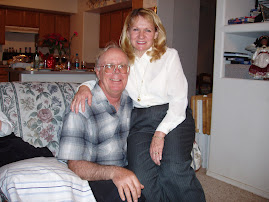Wednesday, October 17, 2007
CLASSIFYING MATTER
MATERIALS
1 tray per team
At least 2 people
A variety of small objects found around the home (buttons, paper clips, etc.)
Paper towels
PROCEDURE
1. Arrange a variety of small household objects on a tray (about 40-50 items). Prepare one tray per team. A team may consist of 1-4 people. Have at least 2 teams.
2. Each team classifies the objects on its tray into just 2 groups. Do not tell the other team what properties are being used to classify the 2 groups.
3. Now, each team inspects the trays of the other teams and tries to guess how that team classified its matter (example, by color, by size, by material, etc.)
4. Return to your own tray. Cover one of the 2 groups with a paper towel. Now, classify the remaining objects into 2 groups.
5. Now, each team inspects the trays of the other teams and tries to guess how that team classified its matter.
6. Repeat steps 4 and 5 until you cannot classify any further.
EXPLANATION
This is a fun activity with valuable skills learned. Matter is classified according to its properties, in any way the children decide. Each classification system is as valid as the other. There are no wrong answers.
This can also be done with buttons if you happen to have a large collection of a variety of buttons that provide different shapes, colors, materials, number of buttonholes, etc.
1 tray per team
At least 2 people
A variety of small objects found around the home (buttons, paper clips, etc.)
Paper towels
PROCEDURE
1. Arrange a variety of small household objects on a tray (about 40-50 items). Prepare one tray per team. A team may consist of 1-4 people. Have at least 2 teams.
2. Each team classifies the objects on its tray into just 2 groups. Do not tell the other team what properties are being used to classify the 2 groups.
3. Now, each team inspects the trays of the other teams and tries to guess how that team classified its matter (example, by color, by size, by material, etc.)
4. Return to your own tray. Cover one of the 2 groups with a paper towel. Now, classify the remaining objects into 2 groups.
5. Now, each team inspects the trays of the other teams and tries to guess how that team classified its matter.
6. Repeat steps 4 and 5 until you cannot classify any further.
EXPLANATION
This is a fun activity with valuable skills learned. Matter is classified according to its properties, in any way the children decide. Each classification system is as valid as the other. There are no wrong answers.
This can also be done with buttons if you happen to have a large collection of a variety of buttons that provide different shapes, colors, materials, number of buttonholes, etc.
Subscribe to:
Post Comments (Atom)




This comment has been removed by a blog administrator.
ReplyDeleteCan you please list the materials that can be included in the tray
ReplyDeleteYou want the items to be small, made of different materials, different colors, anything different about them to be classified.
ReplyDeleteExample: Classifications could be (1) things made out of metal (2) things made out of cotton (3) things made out of plastic (4) things made out of paper. Then, these categories can be subcategorized as to (1) color) (2) magnetic or non-magnetic, etc.
Examples of items: buttons, paper clips, little toy cars, pieces of yarn, a spoon, dental floss, straws, small bathroom paper cups, a business card, post-it notes. Etc. Anything you can find around the house that is small, so that you can fit many objects on the tray.
Some teachers have used only buttons, for students to categorize into colors, how many holes in each, shape, etc. But I never had access to that many buttons at one time!!